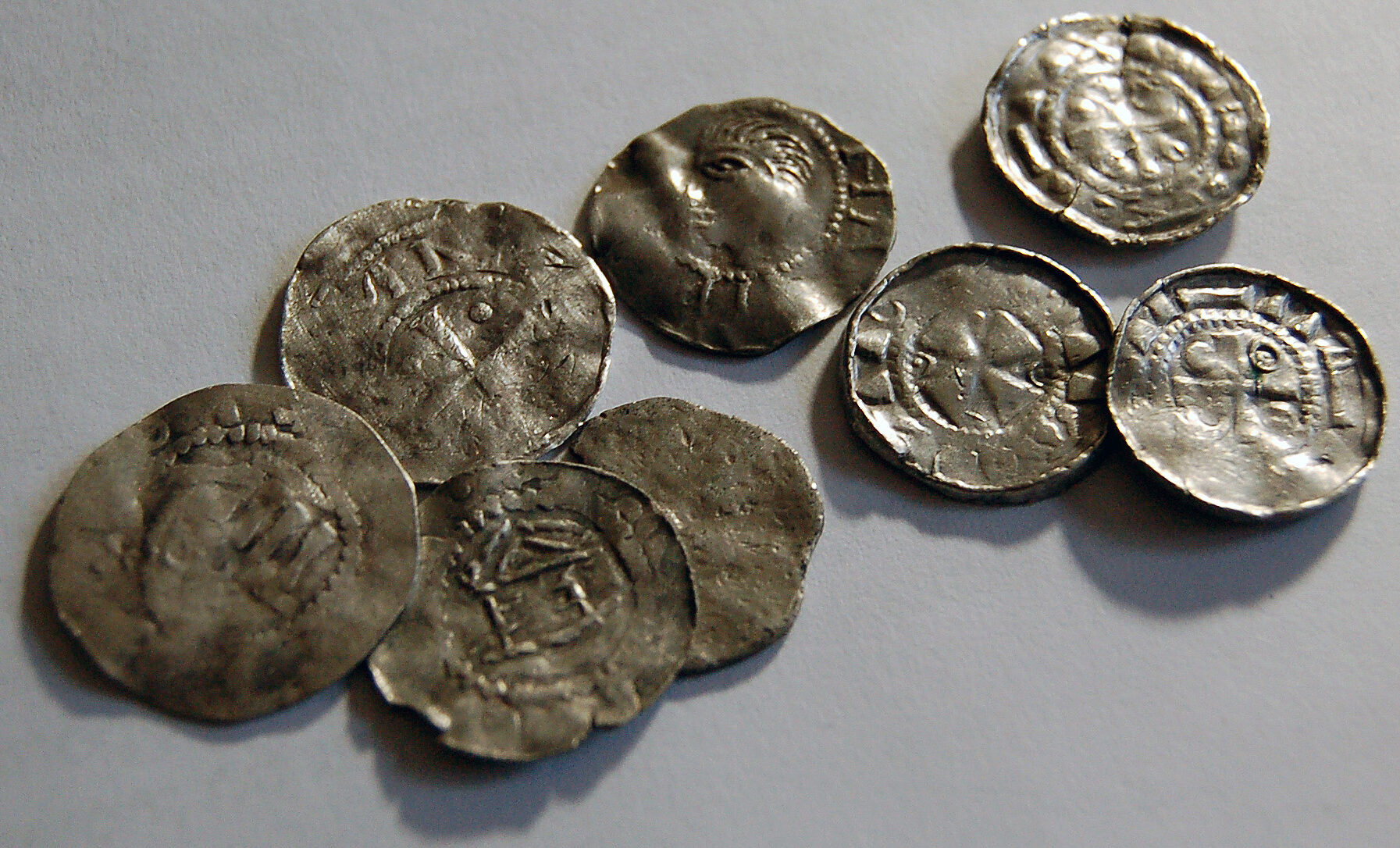A small but significant hoard of medieval coins found near the town of Iława in northern Poland has been transferred to the Ostróda Museum by the provincial conservator of monuments. There are 13 coins and partial coins, most of them cross denari: silver coins minted in Saxony specifically for trade with the Western Slavs. One of the fragmentary coins (used for its weight value) is a 13th century bracteate minted by Sambor II, Duke of Pomerania.
The coins are named for the cavalier’s cross that is always found on the reverse of these denari. Both the obverse and reverse have what looks like lettering bordering the central images and symbols, but they are imitations, a pseudo-legend rather than an inscription. Without any real inscriptions or any other references to the minting year, they are impossible to date precisely, but they were only in production between 965 A.D. and the beginning of the 12th century. They have unusually high edges on both sides.
Cross denari were the primary currency in what is now Poland in the second half of the 11th century. Several hoards of cross denari hve been found in Poland, the largest of which, discovered in 1935 in Słuszków, central Poland, contained more than 12,500 coins.
According to Łukasz Szczepański from the Ostróda Museum, the location of this treasure fits in an interesting way with the identified settlement structure of the southern Jeziorak microregion.
“We have there, among others, a Prussian stronghold from the 11th-12th centuries, a network of open settlements, various types of earth fortifications that are attributed to Prussia. This treasure complements our knowledge about the settlement activity of this zone” – said the archaeologist.
Metal detectorists from the Iława Search Group discovered the coin hoard on a hillside outside the town on a weekend rally earlier this year. As required by Polish law, the metal detectorists had permission from the landowner and the conservator of monuments to search the site. The group hopes that this find and others they’ve made will go on display in a future local museum in Iława, but until then, the Ostróda Museum will be the beneficiary of their work.

What is referred to as ‘Alte Burg’ (“Old Castle”) only comprises half a bergfried in the Lower Saxon district of Osterode in the Harz Mountains of central Germany, and Osterode is in fact the twin city of Ostróda in Poland.
Moreover, the castle folk had back in the 13th century even minted coins, but presumably different ones to those presented here.